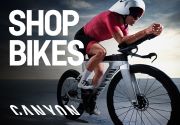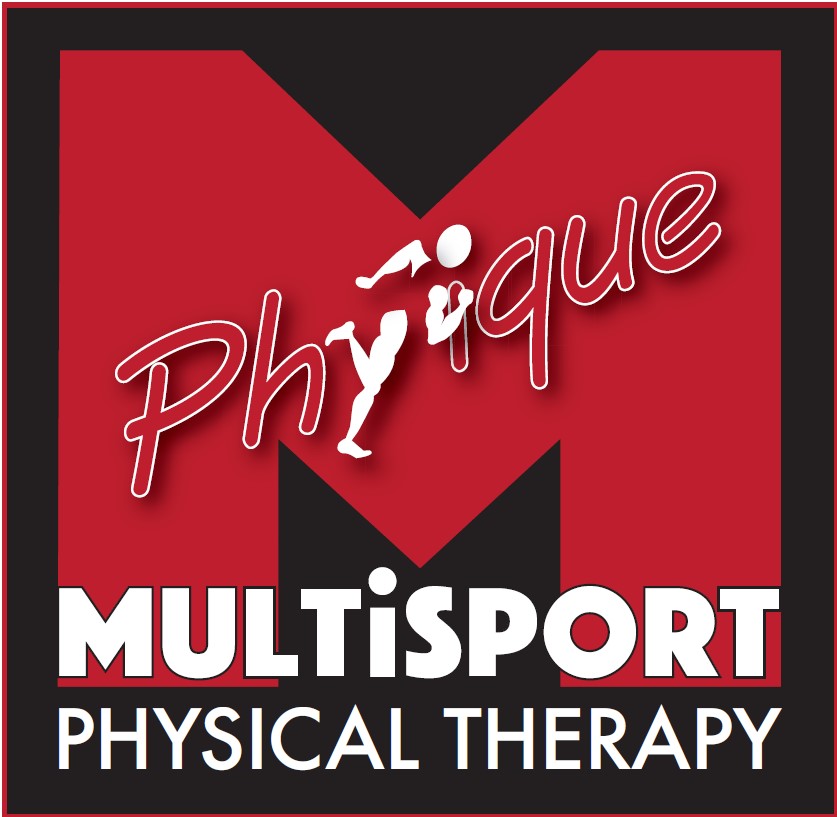Darrell Steele

The TCSD is comprised of many great volunteers. Among the leading volunteers is Darrell Steele. I had the pleasure recently of talking triathlon and life with Darrell. Please join me as we get to know this great guy.
Craig: What was your athletic background before triathlon?
Darrell: I have a bit of a different background than many people coming into triathlons. Like many I was active when I was younger and played a little bit of football, ran track and other sports. I played football as a freshman in high school but during my sophomore year realized that I was much smaller than everyone else and I didn’t like hitting or getting hit so I stopped. I was in a band at the time, at least, we called ourselves that, and music became more of my focus.
After high school I went to visit a friend in Utah and I fell in love with the country; I liked skiing, hiking and other outdoor activities. I wanted to stay and it just so happened there was a school there so I told my folks I was enrolling in the University of Utah. They bought the line so I packed up the wagon and off I went. A month after I moved there I meet a girl; by the way, many critical junctures in my life seem to start with the line, “there was this girl….” Anyway, she was a dancer and we started hanging out. I had done some summer stock musical theatre stuff and with my music background she encouraged me to take a dance class with her.
Well, fast forward a few years (ok, a few more than a few) and I have a Fine Arts degree in Modern Dance and Theatre Arts, I’m living on and off in Los Angeles and dancing with several professional dance companies out of New York, Europe, LA and UT. I toured in musicals through the US and travelled to Latin America dancing and teaching. I also did jazz, tap and other dance styles much like what you would see now on the show “So You Think You Can Dance.” In addition, I did film work and made money doing modeling shows; I wasn’t a model, I was part of a troupe that entertained the crowd throughout the shows. I also co-produced and choreographed an original musical that won some awards.
Craig: That’s sounds like an exciting background, why didn’t you continue in that career?
Darrell: I got old! I had options to teach and continue choreographing but I wasn’t interested in that. At the end of the day, I was too old and too hurt to continue dancing at the level that I wanted to so I decided to hang up my dancing shoes and move on to other things. As I see it, I was able to chase my dreams and to accomplish far more than I ever hoped or expected to.
Craig: What skills or talents that you developed from all your years of dancing have translated to triathlon?
Darrell: Boy, there’s plenty. Obvious there’s the physical coordination, core strength, flexibility and all that stuff has helped me a bunch. But I think the mental conditioning is actually far more applicable. Dancing is hard work and the physical toll it takes on the body is comparable to any professional athlete, maybe even more. In dance, you don’t taper, you never have a season to build up to and recover from. You have to always be taking class, training, rehearsing, performing; even when you’re hurt and you’re always hurt because you can’t stop to heal.
But even more than learning how to suffer, I learned how to work towards a goal. We would rehearse and practice a piece for months and months before we would be ready to perform it in front of an audience. In the end, the journey is far more important than the destination. Having and working on the goal is far more important than the outcome. We only control our attitude and our effort; the final results are dependent on too many variables that are outside our control and therefore, should not be our focus. The key is to put everything you’ve got into the work; that’s where the magic happens. And if you buy me a beer, I will tell you about the magic.
Craig: An investment in beer is always a good thing. How did you get started in triathlon?
Darrell: Well, after I stopped dancing, I took about 6 or 7 years and did virtually nothing physically. I had to let my body heal; I was just over 30 years old and pretty beat up. I started a career in sales, got married, had 3 kids and started to figure out how to make money. I found myself in a sales job where I was sitting at a desk all day - dialing and talking on the phone. I was getting soft and sitting didn’t give me an outlet for my physical energy. So I decided to take my lunch breaks outside and slowly started walking and then running again. It took awhile to get my body wanting to move again. But as I got going I remembered why I loved it so much.
I was living in Orange County at the time and a few years later I took a job with a company based in San Diego and after a few more years the company offered me a promotion if I relocated to San Diego. We found a house in Carlsbad and the offices were off Mira Mesa. It didn’t take long for me to see that the commute sucked so I started riding my bike to Encinitas, catching the Coaster to Sorrento Valley and then riding up the hill to the office. I started adding more bike days, skipping stations and loving every minute of it.
So, now I’m riding and I was still running so I’m thinking I’m in pretty good shape. I was at a party on New Year’s Eve 2003 – 2004 and a buddy started talking about how he had been doing triathlons. I “knew” how to swim having grown up going to the beach, so when he challenged me to a race, I was just drunk enough and foolish enough to take the challenge and tell him how much faster I would be. We picked the Spring Sprint in May 2004 as “our race.”
My buddy, Diego Pombo, was (still is) about 8 years younger than me but I was sure I was going to smoke him. To be sure, I actually got in a pool once in April while vacationing in Palm Springs and swam laps. I was “ready!”
Craig: What was your experience like at your first triathlon?
Darrell: Diego went off in the wave before me and while I waited from my wave to start I was planning when I would pass him; it wouldn’t be on the swim, most likely about 10 miles into the bike. The horn went off and I bolted… for about 50 yards after which I was hyperventilating so hard I had to stop. I flipped onto my back and swam the rest of the 700 yards with my own personal lifeguard escort. Yeah, I know the actual course was only 500 yards, but have you ever try to sight on your back?
Needless to say, I never saw Diego until the finish line but I was hooked. I did a bunch of other sprints that year and actually I think it was my 4th race before I was able to swim the entire distance without flipping onto my back to backstroke. I was swimming like one of those little wind-up toys with the arms flapping in circles and me swimming in circles. I’ve gotten a little better since then but I think that’s one of the reasons I love to swim buddy at our local races, I remember just how hard it was for me.
Craig: You ran your first marathon earlier this year at the Rock 'N Roll Arizona. What was that experience like for you and what did you learn?
Darrell: It was a death march! The first thing I said after finishing was that there’s nothing good that happens in the second half of a marathon. Seriously, for the last few years I’ve been running 3 to 5 half marathons a year and I really like the distance. After about mile 18 I was done, I really didn’t need or want to run any more. And that’s when the second lesson became apparent; that you shouldn’t decide to run your first marathon 10 weeks before the race, with your most recent training runs averaging 6 miles.
Honestly, there wasn’t anything I liked about miles 18 – 26. In fact, I’m so convinced that there is no justifiable reason for anyone in their right mind to ever need or want to run 26.2 miles, that I signed up to do it again next January; just to prove it.
I think that last thing I learned was that even though I was foolish to ramp up that quickly, marathon training helped me knock over 7 minutes off my fastest half time. I am looking forward to AZ again next January and I do expect to do a lot better since I will build my distance with a bit more training.
Craig: Out of all the events you have done in your career, what performance are you most proud of and why?
Darrell: This may sound trite but I’m most proud of my children. I have three wonderful kids, well not so much kids anymore. I have a 23 year old daughter who is married, has a son and is pregnant with another son. I also have two sons, one who is 19 and the other 18 who have both decided to live with me. I’m proud to say they are great people, with good priorities, big hearts, great minds and good attitudes towards life and their responsibilities. As corny as it sounds, I’m most proud of how we raised them and how they’re turning out.
Craig: How did the Saturday morning TCSD ride from the Del Mar Starbucks come to be?
Darrell: I took over leading the ride back in late 2006 so I didn’t start it. As the story goes, it was originally started back around 1994 by a couple guys who wanted to meet girls. Back then the Club was very small and most of the members were serious athletes; all of the Club rides were hammer-fests. Jim McCann, who was the TCSD President, asked Vince Sermona and Adrian Campos to lead a ride that would be exclusively for slower riders. Vince and Adrian quickly realized that this meant women and they jumped at the chance.
Sometime later Amanda Benedict took over leading the ride and she expanded it to include faster riders and different routes. I started joining the ride in 2005 when Bobby was leading it. But then Bobby was being transferred to Los Angeles and Jim McCann was looking for someone else to lead the ride. Jim, Dee Dee, my buddy John Carter and I were sitting at breakfast after one of the rides and Jim asked John and me if we would take over leading the ride. Actually, Jim really didn’t ask us. Anyone who remembers Jim will know that he didn’t so much ask as started telling us about all the great things we could do with the ride and how much fun it would be for us and everyone else if we started to lead it. Well, we took the bait, but about a month later John changed jobs and had to start working Saturdays. So I took it on and just haven’t been able to stop since.
I still talk to Vince and he said the ride worked back then; meaning they met a lot of girls. And rumor has it, it still does. Now I don’t want to give the wrong impression, the ride is about riding, but from what I’ve heard there are many couples who claim their first meeting is on the ride. This includes the recently married Brent and Michelle Howell. And I must admit, it worked for me too!
Craig: For people who have yet to try it, what would you like people to know about the Saturday TCSD bike ride?
Darrell: The ride is really for intermediate riders, those who are comfortable riding in traffic with other riders. We have a wide range of skills and speeds of the riders who show up, but real beginner riders should look to improve their basic skills first. The Club does hold beginner rides about once a month which are a good venue for learning those basic skills.
Craig: What other TCSD activities have you volunteered for and why do you volunteer so often?
Darrell: I wish I could do more because I always get more out of the experience of helping than I put in. As I mentioned before, my favorite volunteer activity is being a swim buddy. I was a horrible swimmer and I remember just how hard it was for me to finish a 500 yard swim. As a swim buddy I’ve swam with guys at some of the beach entry sprints that would have absolutely given up had I not been there. I swam with a woman at one sprint who was so slow that we were passed by 5 waves (not crashing waves, the next group of swimmers). That’s over 30 minutes to swim 500 yards. But I saw her after the race and she was so excited that she finished that she grabbed me and started crying.
Over the last 8 to 10 years the Club has helped me get through some very difficult changes in my life; loss of my marriage, loss of work, career changes. I feel a great deal of appreciation to the Club and the people who have made it so very special for me, and that includes you. You’ve done a bunch for the Club and that inspires me to also help where I can. I guess I was taught that if you want to be a part of a group or organization, you need to jump in and help out. There’s always so much that needs to be done and so much that comes back from doing it.
Craig: You went sky diving for the first time this year. What brought that on?
Darrell: Yeah, I needed to check that off my bucket list. I had bungee jumped about 20 years ago and whenever I’d tell someone about it, they always ask if I had also sky dived. I would have to say no and I don’t like admitting that I haven’t done something. So I was thinking about it, for about 20 years but it took my son suggesting it to make me do it.
I asked my youngest son what he wanted to do to celebrate his 18th birthday and he said he wanted to jump. Well actually, he asked if I was “too old to jump out of a plane.” That was all it took. I couldn’t let a challenge like that go without putting it to rest. We went out to the place east of Chula Vista and it was very exciting. But to tell the truth, bungee jumping was harder; you’re close enough to the ground to have a sense of how high you are. When you are 13,000 feet up in a plane, the ground is a bit more abstract. But it was still very exciting, a bit un-nerving and I’m glad we did it.
Craig: What do you do for a living?
Darrell: I run a field consulting group for a software company providing services to the Automotive Industry. We have a software solution and my group consults with our customers who are car dealerships. We work with them and help them use the software and get the most returns from it.
I travel almost every week which adds an element of complexity to my training but it’s a good job, which I’m thankful to have.
Craig: What are your future goals in triathlon?
Darrell: To win Kona! I mean to qualify for Kona. Or maybe just go and watch them race Kona.
Seriously, my goals are quite humble right now. My next race is the “Classic.” I raced it last year and set a PR, so I’m hoping to beat that again. Also as I mentioned, I expect to beat my marathon time by 20 to 25 minutes next January. As soon as I finish the Classic, I plan to start ramping up my run distances so I should have a solid base going in and am confident that I can cut that much if I train correctly.
Next year I’m also looking for another Half IM to race. I’ve done a couple Half IM’s and I think I can cut a whole bunch of time off that distance if I pick the right race and get in the training. I also plan on doing a full Ironman distance race at some point, but not while I’m travelling this much for work. That’s one on the bucket list.
But looking down the road, mostly, I just want to keep my sponsors happy so they keep allowing me to buy all their products and gear. It’s a tough job but they’re a good group and they believe in me, or at least in my wallet.
Craig: Darrell, your “sponsors” should be very proud that you “fly their flag”. Thank you for sharing your story. You always brighten my day. Good luck with your marathon, Half IM and all your other goals.
Craig Zelent is a USA Triathlon Level 1 Certified Coach. Craig can be reached at 760-214-0055 or tricraigz@yahoo.com.







